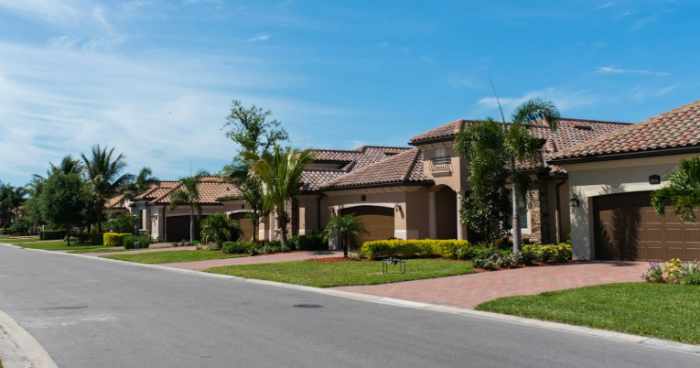The real estate landscape is undergoing a significant transformation, with investors increasingly shifting their focus from primary metropolitan hubs to emerging secondary cities. These cities, often overlooked in the past, are now becoming hotspots for real estate opportunities due to their affordability, growing economies, and improved infrastructure. In this short piece we will highlight which secondary cities hold great real estate investment opportunities and how you can take advantage of them. Let’s start!

New Hotspot for Real Estate Investment Opportunities
As primary markets become oversaturated and overpriced, secondary cities offer a fresh frontier for investors seeking higher returns and long-term growth potential. This article explores why these cities are gaining traction and how they present a lucrative opportunity for savvy real estate investors.
A Shift in Investment Trends
Secondary cities, often defined as urban centers smaller than primary cities but with robust economic activity, are experiencing a renaissance. Cities like Nashville, Tennessee; Austin, Texas; and Boise, Idaho, exemplify this trend, attracting businesses, young professionals, and families due to their lower cost of living, vibrant cultural scenes, and improved connectivity.
For real estate investors, this migration presents a golden opportunity to capitalize on rising demand for housing and commercial spaces. Unlike primary cities, where property prices have skyrocketed, secondary cities offer more affordable entry points, making them attractive for portfolio diversification.
These cities also benefit from strong growth potential and government incentives aimed at boosting local economies, further enhancing their appeal. As more people and businesses flock to these areas, the demand for real estate is expected to surge, driving up property values and rental yields.
Investors are increasingly recognizing the long-term potential of secondary cities, as they combine affordability with economic dynamism. This shift is reshaping urban landscapes, creating new hubs of innovation and opportunity. For those seeking real estate investment opportunities in emerging markets, secondary cities represent a strategic and lucrative option, poised for sustained growth in the coming years.
Related: The 4 Essential Keys to Real Estate Investing
Why Secondary Cities Are Outperforming Primary Markets
One of the key reasons secondary cities are outperforming primary markets is their ability to offer a better quality of life at a lower cost. In primary cities, skyrocketing housing prices and congested living conditions have made it increasingly difficult for middle-income earners to afford homes. This has led to a migration of people relocating for work to find more affordable and spacious living options in these secondary cities.
Moreover, the COVID-19 pandemic accelerated the trend of remote work, allowing people to move away from expensive urban centers without sacrificing their careers. This shift has fueled demand for housing in secondary cities, where buyers can get more square footage for their money. For real estate investors, this trend translates into higher occupancy rates and stronger rental income.
Additionally, secondary cities often have less stringent regulations and lower taxes, making it easier for investors to navigate the market and maximize their returns. As a result, secondary cities are becoming increasingly attractive not only for residents but also for businesses and investors looking for growth opportunities.
The combination of affordability, improved infrastructure, and a growing talent pool is driving economic development in these areas, further enhancing their appeal. This trend is expected to continue as more people prioritize quality of life and cost-effectiveness over the prestige of living in primary urban centers.
Navigating the Secondary City Real Estate Market
Real estate investment opportunities in secondary cities demand a strategic and well-informed approach. While these markets hold immense potential for growth and returns, they also present unique challenges that require careful consideration. For example, some secondary cities may lack the robust infrastructure, amenities, or economic diversity of larger metropolitan areas, which could affect property values in the short term. However, as these cities continue to develop and attract increased investment, these limitations are likely to be addressed, paving the way for long-term appreciation and profitability.
For homeowners looking to capitalize on this emerging trend, timing and local expertise are crucial. If you’re considering selling your property in a secondary city, collaborating with a trusted and knowledgeable real estate professional is key. For example, if you’re exploring options to sell your home, consider reaching out to Bluecrest Property Group, a team renowned for their expertise in quick cash home sales. Their in-depth understanding of local market dynamics and proven ability to navigate the real estate landscape can help you secure a fair deal, simplify the selling process, and maximize your returns. By partnering with the right experts, you can effectively tap into the growth potential of secondary cities while minimizing risks.
The Future of Real Estate Investment Lies in Secondary Cities
As the real estate market continues to evolve, secondary cities are poised to play a pivotal role in shaping the future of investment. Their unique combination of affordability, growth potential, and improving infrastructure makes them an ideal choice for investors looking to stay ahead of the curve. Whether you’re a seasoned investor or a first-time buyer, now is the time to explore the opportunities these cities have to offer. From lower entry costs to untapped potential, secondary cities provide a promising landscape for diversification and long-term gains.
The rise of secondary cities represents a paradigm shift in the real estate industry. By focusing on these emerging markets, investors can unlock new avenues for growth and profitability. As more people and businesses recognize the benefits of secondary cities such as reduced congestion, lower costs of living, and expanding job markets the demand for real estate in these areas will only continue to rise. Don’t miss out on this transformative trend; start exploring secondary city markets today and position yourself for long-term success in an ever-changing real estate landscape.



